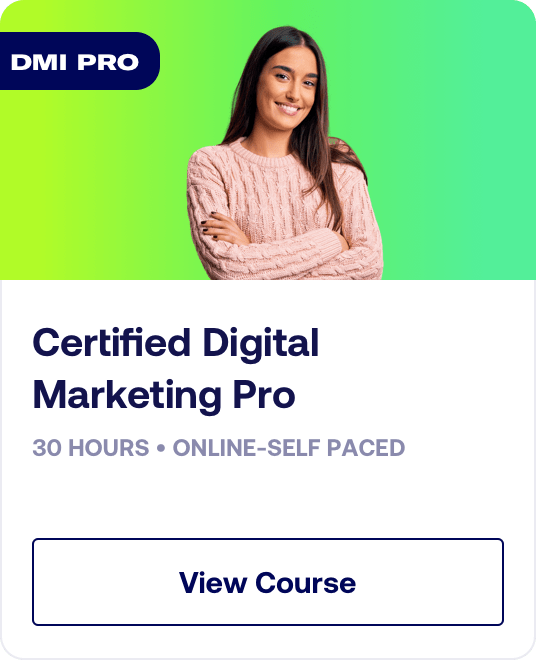Digital Marketing - Study Notes:
Research toolbox
Competitive research tools include:
- Social media metrics
- Social intelligence
- Content audits and analysis
- Search – news/video, online articles, interviews, and case studies
Framework/spreadsheet
Before researching the competition, it’s a good idea to create a spreadsheet so that you can compare apples to apples when it comes to things like budget and reach.
It’s also good to have a framework for your research for qualitative data, such as primary market and content strategy. This way, as you dig deep into each competitor's profile, you know exactly what you are looking for. Your framework is likely to shift over the course of your research and analysis.
Sometimes, later in the process, you may stumble across a piece of information that will send you back to look for the same information in the brands you’ve already covered. Research is never linear. You can use the headings in the example as a guideline for creating your own spreadsheet (see slide ‘Framework/spreadsheet’).
Social media metrics
One way in which you can get a sense of how well the competition is doing in reaching its audience is to measure their results. There are social media metrics tools that you can use to input a page or an account that you do not have admin access to, in order to get an overview of their metrics, including:
- Polygraph Media
- Simply Measured
- Mention
What you're looking for with these tools is not only the basic numbers - followers, likes, and so on - but also the content that your competitors are sharing.
Polygraph (polyscore)
For instance, here is a shot of the kind of data that you can pull when you connect a competitor's Facebook page to Polygraph (see slide ‘Polygraph (polyscore)’). You can see the kind of content that has done well, what format it's in, and are able to actually open the posts to take a look at them. This is a lot faster than scrolling through years and years of data on a brand's Facebook page.
Hootsuite
In Hootsuite, you can add additional listening tabs for your competitors, to keep track of their mentions and activities:
- Step 1: Create a new tab on your Hootsuite dashboard. You can either create one tab for all your competitors, or one for each, if they have a lot of properties.
- Step 2: Click Add Stream and choose the Search tab. In the Search query box, enter your competitor's account name, for example ‘@sephora’. This will show all the people mentioning your competitor's brands.
- Step 3: You can also track your competitor's Facebook, Twitter, Google+, LinkedIn, WordPress, and Instagram pages by clicking the Page Search tab and selecting the relevant social media option. This will show you every post they share and interactions with those posts. Optionally, you can also track hashtags across the various networks that are related to your competitors. Now you can follow along with audience interactions with your competitor's social activity.
Social Mention
Social Mention is like Google but for social mentions. It searches across blogs, microblogs, images, and videos that mention a brand or phrase.
All you do is go to the home page, type in a search for your competitor, and it will display all of the mentions of that competitor. You can use advanced search to narrow the type of content that you're searching for. For example, if you only want to see all the images that are posted to blogs related to your competitor, you can narrow the search by images and blogs.
Klear.com
Klear, for competitive research, straddles the social media metrics tools and the social intelligence tools. It's brilliant for just typing in the Twitter, Instagram, or Facebook handle of any of the competitors you'd like to analyze and getting an analysis of their content, their engagement, which celebrities follow them, and their demographics. You could also set up competitive monitors to track how you're doing in comparison.
Affinio
Affinio also has the capability to do a competitive analysis based on the analysis of multiple accounts at once.
In this example (see slide ‘Affinio – tribes across brands’), the top 10 London department stores are analyzed to find out how each store performs amongst interest-based communities. It provides an overview of the tribes who like department stores. Some of these include moms, interior designers, and beauty bloggers.
The small dots represent the tribe members, and the size of the colored areas represent the size of the tribe. The lines between the colored areas show any sort of crossover or cross-pollination between the tribes.
When you compare the market share for each department store, you start to see which audience each store appeals to most (see slide ‘Affinio – different stores, different tribes’). Interior designers love Liberty and Fenwick. Foodies love Fortnums the most. And beauty bloggers love Fenwicks. You can find these charts under the Competitive tab in the report.
Content audits
After you use the tools to gather the data, you'll be able to do a content audit. A content audit is the process of evaluating content elements and information assets on a part of or all of a website. What you want to assess is:
- Top content. What content performs best, i.e. has the biggest reach, gets the most likes, shares, and so on.
- Content mix. This refers to the media of the content, i.e. audio, video, image, text.
- Content strategy. This is who competitors are targeting with their content.
- Content frequency. This is how often competitors are posting their content to the different networks.
- Paid versus organic. You can usually tell if something has high reach and high engagement or high reach and low engagement. Most often, the high reach, low engagement content is paid for.
- Anything that is out of the ordinary. For instance, if a competitor has a bump in engagement over a period of time and it doesn't look paid for, how did they strike a nerve with the audience?
You'll also want to take stock of content across their various platforms, including Twitter, Facebook, LinkedIn, Instagram, blogs, newsletter, white papers, YouTube, Pinterest, Snapchat, Periscope, and more.
What you're trying to discover is mostly what their strategy is, who their audience is, and how well it's working.
Search
You can also find a lot of the other data you need through search. Through articles, interviews, and case studies, you can usually find the information you need to fill in any gaps in your research, like budgets, tactics, and staff.
Sites like Contently does a lot of research on clients and non-clients that can be quite revealing. Video search will also bring up interviews and presentations from members of your competitor's digital team, where they'll often go into their own case studies, revealing great information.
Google News Alerts
In order to stay on top of the news and events around your competitors, you can also set up an alert on Google news search, where you can have anything new delivered to your inbox daily or weekly, as you prefer.
Back to TopTara Hunt
Tara Hunt is an executive-level digital marketing professional with over 20 years of experience. She is the founder of Truly Inc., the author of one of the first books on how the social web is changing business, and a professional public speaker. Tara has created and executed proven digital and social strategies across multiple industries. She specializes in relationship and inbound marketing, with a passion for data-driven strategy.





